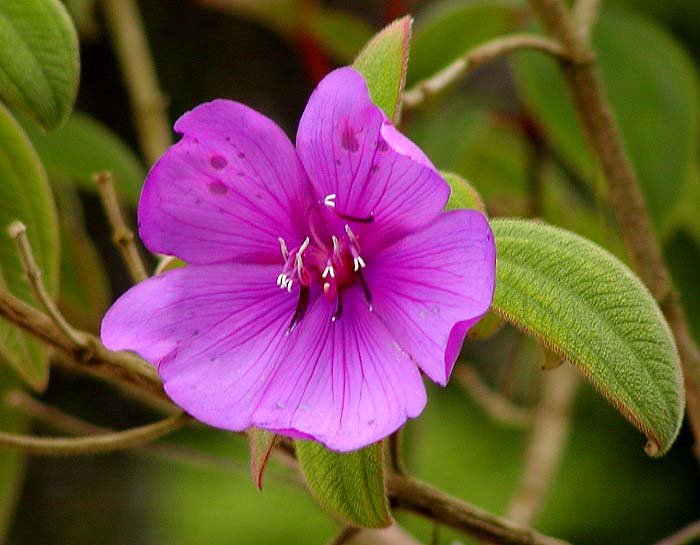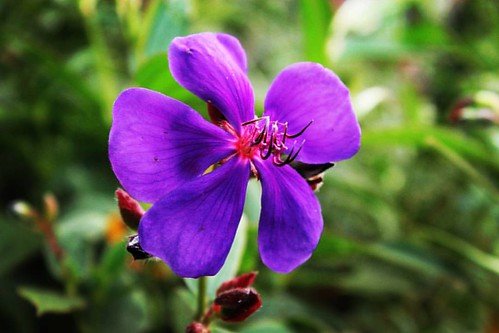
Members of Tibouchina sensu lato are diagnosed by a number of traits including pentamerous flowers with anthers having developed pedoconnectives (the connective tissue below the anther locules) and anther appendages that are ventrally bi-lobed. These traits are likely plesiomorphic in the core Melastomeae. The magenta or purple flowers are often showy, and the stamens may be dimorphic. Members of Tibouchina have simple leaves that lack stipules with the conspicuous ladder-like venation that is characteristic of most melastomes. As a member of Melastomeae, Tibouchina also has capsular fruit and cochleate seeds.

All 240 species of Tibouchina s.l. are native to the Americas as far north as Mexico, with a large proportion found in Brazil. Many species of Tibouchina s.l. are found in the Mata Atlantica in eastern Brazil, while many others are found in the cerrado and campos rupestres. Members of Tibouchina sensu stricto tend to be found in lowland savannas and on the lower slopes of the Andes. All Tibouchina species are considered noxious weeds in Hawaii because of their high potential for being invasive species. Within Tibouchina s.s., many species, such as T. papyrus, T. araguaiensis, T. nigricans and T. mathaei, have narrow distributions, being known from only a handful of locations, while a few other species, including T. aspera, T. barbigera, and T. bipenicillata, have broader distributions.

https://en.wikipedia.org/wiki/Tibouchina
Tibouchina
Tibouchina Aubl. is a Neotropical flowering plant genus in Melastomataceae Juss. that contains approximately 240 species. Species of this genus are herbs, shrubs or trees and typically have purple flowers.